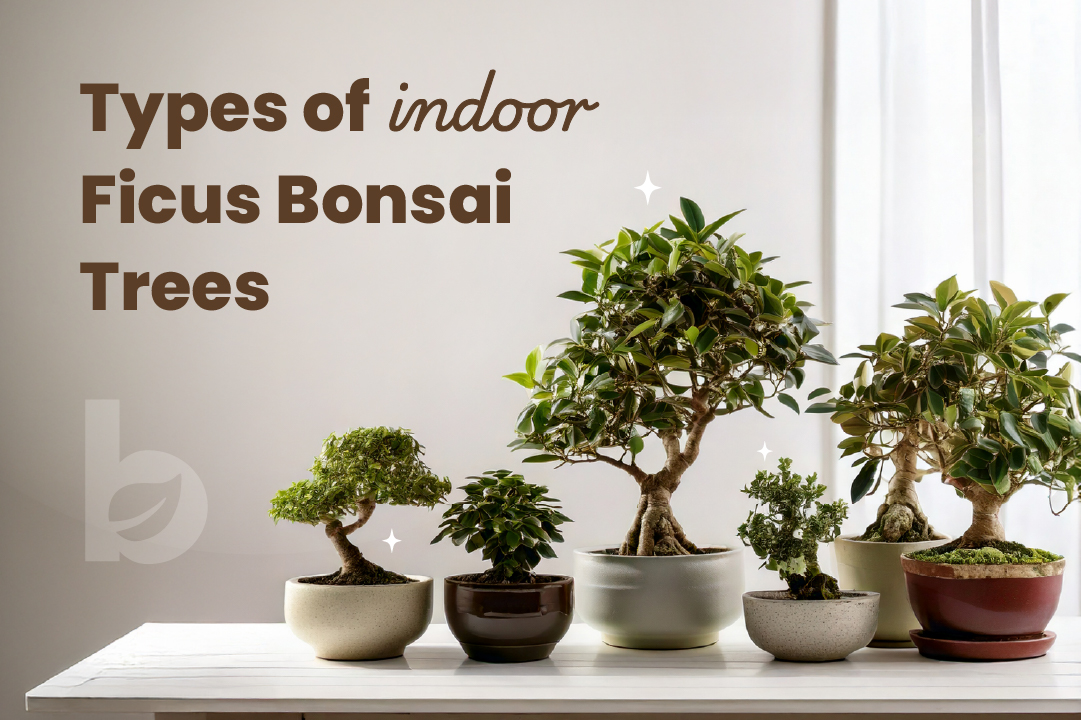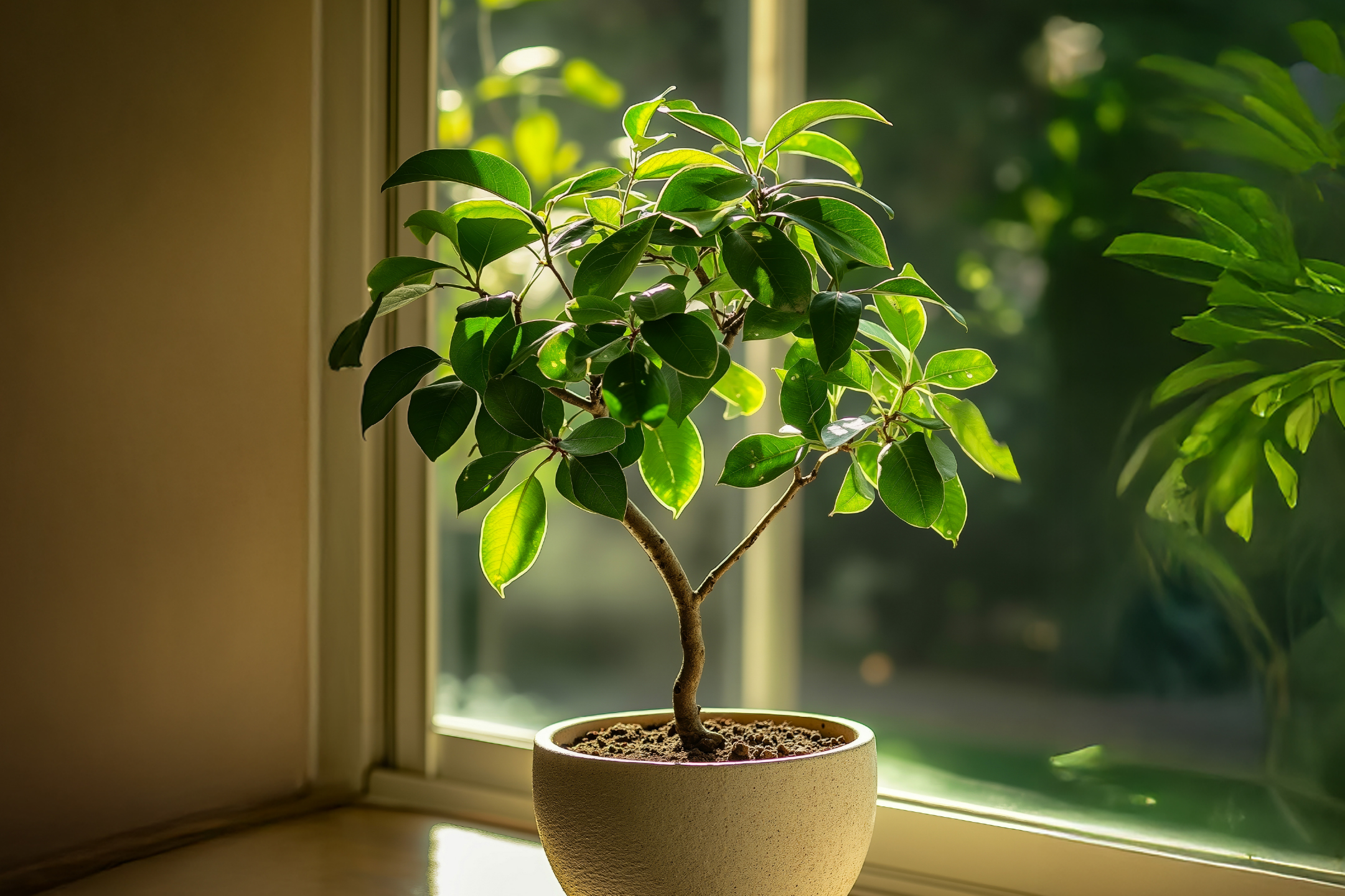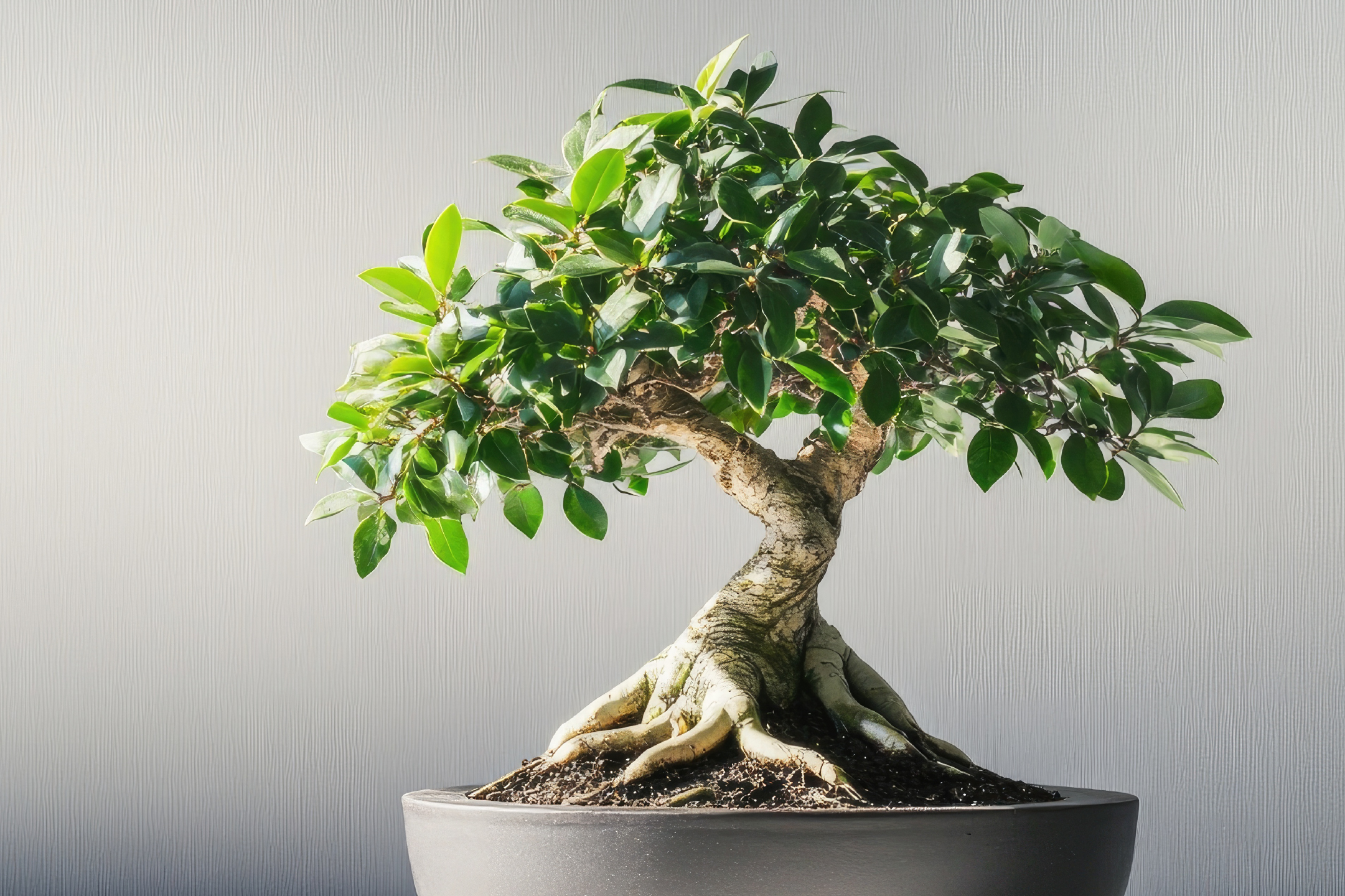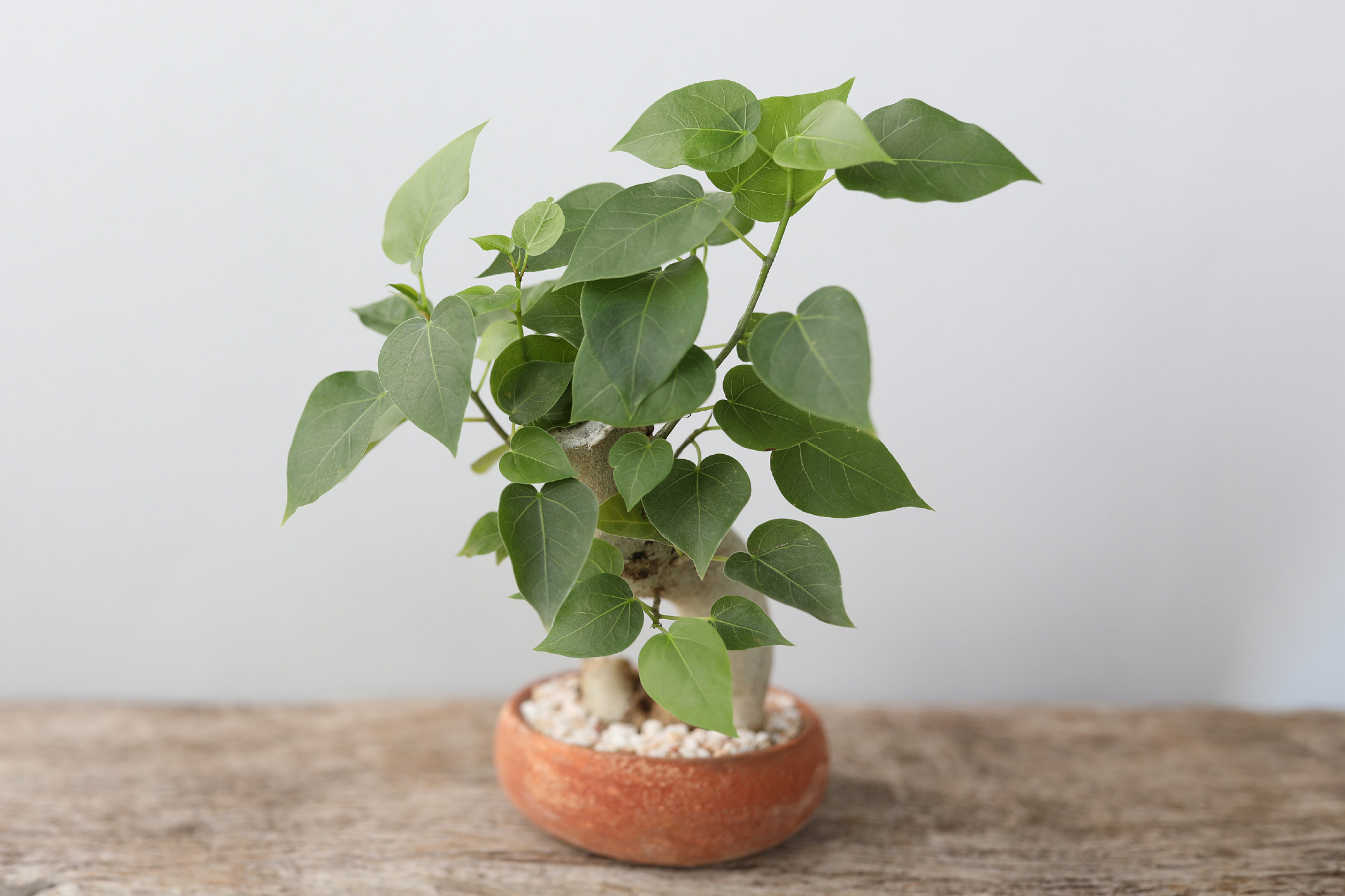
Bonsai trees have captivated gardening enthusiasts for centuries, offering a miniature yet majestic version of nature’s beauty. Among the many bonsai varieties, bonsai ficus stands out as one of the most popular and resilient choices for indoor cultivation. With its adaptability, glossy foliage, and intricate aerial roots, ficus bonsai trees bring an exotic charm to indoor spaces.
In this blog, we’ll explore the different types of indoor ficus bonsai trees, their unique features, and how to care for them to maintain their health and aesthetic appeal.
Why Choose a Ficus Bonsai?
Ficus bonsai trees are widely chosen for indoor bonsai cultivation due to their:
- Resilience – They can tolerate varying conditions, making them ideal for beginners.
- Aerial Roots – Some ficus species develop striking aerial roots that enhance their appearance.
- Evergreen Nature – They retain their lush green foliage throughout the year.
- Adaptability – They can thrive in both bright and moderate indoor light conditions.
Now, let’s dive into the most popular types of ficus bonsai trees perfect for indoor settings.
1. Ficus Retusa (Ginseng Ficus)

Ficus Benjamina, also known as the Weeping Fig, is a popular choice for bonsai due to its elegant, arching branches and delicate foliage. This tree:
- Has small, pointed leaves that droop gracefully.
- Develops aerial roots in high humidity.
- Responds well to pruning and shaping.
Care Tips:
- Light: Thrives in bright, indirect sunlight but can tolerate some shade.
- Watering: Water moderately, allowing the topsoil to dry slightly between waterings.
- Humidity: Benefits from regular misting to prevent leaf drop.
3. Ficus Microcarpa (Chinese Banyan)

A highly adaptable variety, Ficus Microcarpa, commonly known as the Chinese Banyan, features dense foliage and a striking root structure. Key features include:
- Small, rounded leaves ideal for bonsai aesthetics.
- A strong trunk with potential for aerial root formation.
- High resistance to pests and diseases.
Care Tips:
- Light: Prefers bright, indirect sunlight but can tolerate lower light levels.
- Watering: Maintain moderate watering with well-draining soil.
- Pruning: Regular trimming is necessary to keep its shape compact.
4. Ficus Religiosa (Sacred Fig)

Revered for its spiritual significance, Ficus Religiosa, also known as the Sacred Fig, is a distinctive bonsai choice. Its notable characteristics are:
- Heart-shaped leaves with a pointed tip.
- Fast-growing nature, requiring frequent pruning.
- Can develop impressive aerial roots in the right conditions.
Care Tips:
- Light: Requires bright, indirect light to thrive.
- Watering: Prefers slightly moist soil but should not be waterlogged.
- Fertilization: Monthly feeding during the growing season supports healthy growth.
5. Ficus Macrophylla (Moreton Bay Fig)

Ficus Macrophylla, commonly called the Moreton Bay Fig, is a robust species with large leaves and an extensive root system. It is an excellent bonsai tree for those who appreciate dramatic root formations.
- Features broad, dark green leaves.
- Develops thick, buttressed roots over time.
- Requires ample pruning to control its size.
Care Tips:
- Light: Prefers bright light and can tolerate some direct sun.
- Watering: Keep soil evenly moist but well-drained.
- Repotting: Needs repotting every 2-3 years due to its vigorous root growth.
General Ficus Bonsai Care Guide
Regardless of the type of ficus bonsai you choose, following these care practices will help ensure a healthy and thriving tree:
1. Light Requirements:
Ficus bonsai trees prefer bright, indirect sunlight. Placing them near a south-facing window with filtered light is ideal.
2. Watering Needs:
- Water when the topsoil feels dry but avoid overwatering.
- Use a humidity tray or mist the leaves to maintain moisture levels.
3. Pruning and Shaping:
- Trim new shoots regularly to maintain a compact shape.
- Wire the branches gently to train them into desired styles.
4. Repotting:
- Repot every 2-3 years to refresh the soil and promote healthy root growth.
- Use a well-draining bonsai soil mix.
5. Pest Control:
- Watch out for aphids, spider mites, and scale insects.
- Apply neem oil or insecticidal soap if necessary.
Best Indoor Placement for Ficus Bonsai Trees
- Near a bright window with indirect sunlight.
- In rooms with stable temperatures (avoid drastic temperature changes).
- Away from air vents and direct heating sources.
Looking for a Bonsai?
Elevate your space with the charm of DeHaat Bageecha’s Ficus Bonsai—a stunning blend of elegance and nature. Whether you want to enhance your indoor garden, beautify your home, or add a refreshing touch to your workspace, this bonsai is a perfect choice.
With its graceful aesthetics and easy-care requirements, it’s ideal for both beginners and seasoned plant enthusiasts. Bring home this miniature masterpiece and create a serene, green haven.
Get yours today at DeHaat Bageecha!
Conclusion
Choosing the right bonsai ficus tree can elevate your indoor gardening experience, bringing both aesthetic beauty and a sense of tranquility to your space. Whether you prefer the intricate aerial roots of Ficus Retusa or the delicate elegance of Ficus Benjamina, there’s a ficus bonsai for every bonsai enthusiast.
With proper care, these resilient trees can thrive indoors for years, making them an excellent choice for both beginners and experienced bonsai lovers. Start your indoor bonsai journey today and experience the joy of cultivating your very own miniature tree!
FAQs
1. Which ficus bonsai tree is best for beginners?
Ficus Retusa (Ginseng Ficus) is the best choice for beginners due to its resilience, low maintenance, and ability to adapt to different indoor conditions.
2. How often should I water my ficus bonsai tree?
Water your bonsai ficus when the top layer of soil feels dry. Overwatering can lead to root rot, so ensure proper drainage and avoid keeping the soil too soggy.
3. Can ficus bonsai trees grow in low light conditions?
Yes, ficus bonsai trees, especially Ficus Microcarpa and Ficus Benjamina, can tolerate lower light conditions. However, they thrive best in bright, indirect sunlight.
4. Do ficus bonsai trees need fertilizer?
Yes, feeding your ficus bonsai with a balanced bonsai fertilizer every 2-4 weeks during the growing season helps maintain healthy growth and vibrant foliage.



